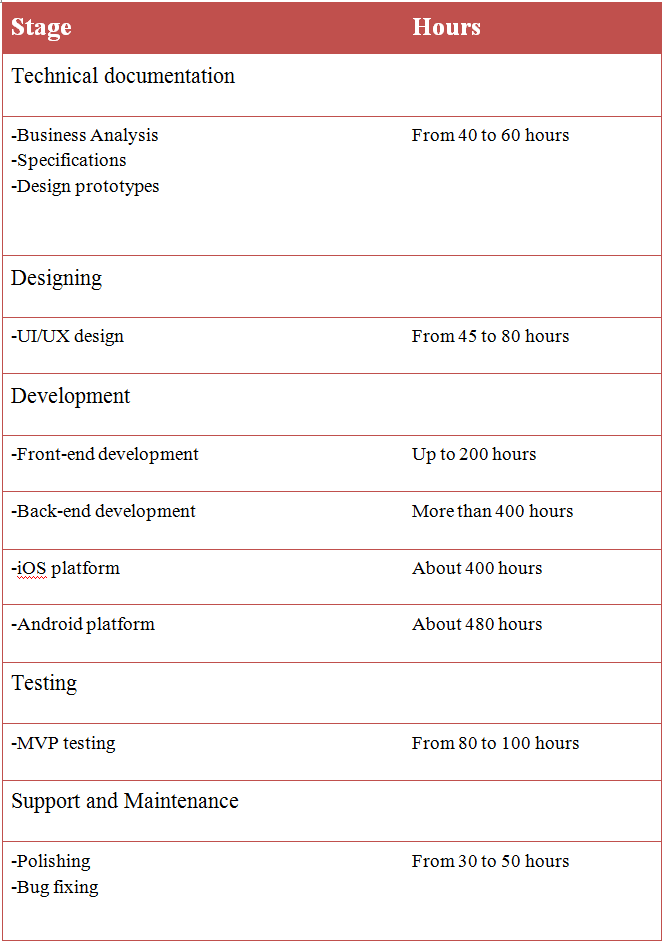Every year we make New Year resolutions to work out daily. Soon we forget these resolutions and move on. We are preoccupied with our busy schedules. Hitting the gym is a nightmare. We become lethargic and get used to our obese bodies. This is where fitness app development companies come into play. Mobile App Developers have made our lives easier than ever. Android and iOS Development companies have transformed everything by coming up with marvelous ideas about how to develop a fitness trainer app. Today, fitness apps have become an excellent source of constant income. But, how much does it cost to build a fitness trainer app? What should be the budget for developing such apps? Let us have a look!
Strategy To Develop A Fitness Trainer App
These statistics show us very well that fitness apps are the need of an hour. So, why not take advantage of this fact? Let us see what we have to keep in mind while developing an app.
1. Type of application
This is the first factor that influences the cost of developing a fitness app. To sustain in the world of cut-throat competition, you must ensure that the idea of the app and the features are a little different from others.
Workout and exercise apps
There are apps like ‘MapMyFitness’ and ‘Sworkit’. They are virtual gym instructors and useful for people who have busy schedules. One can avail all information about the various weight training exercises. videos, images, or animations that can make the experience even better for users. Besides, for weight-loss goals, these fitness apps can be custom-made for anyone.
Diet and nutrition apps
These apps act like personal dieticians on anybody’s phone. One can be healthy and fit only when s/he follows a balanced nutritional diet. With heart diseases and obesity increasing day by day, such apps will help people follow a strict diet plan and consume nutritious food. Some examples are ‘MyFitnessPal’ and ‘HealthifyMe’. ‘Waterlogged’ is another app that monitors the amount of water intake in a day.

Activity tracking apps
Fitness apps like ‘Runtastic’ and ‘GoogleFit’ help in tracking the physical activities of an individual. These include walking, jogging, cycling, running, etc.
The motion sensors attached to the smartphone provide accurate data about how much distance the user has covered. These apps also show how many calories have been burnt in this process. Also, users can set their own fitness and activity regimes.
Yoga and meditation apps
These apps provide tutorials, videos, and images about how to correctly do different yoga postures. Some apps are for specific asanas whereas others have different exercise routines. The ‘Yoga Studio’ is an apt example. Also, meditation apps like ‘Headspace’ bring peace of mind and relax the entire body.
2. Availability of features
The greater the number of features, the better the performance. In fact, costs will increase with the inclusion of different interesting functionalities, but it is worth it. So, what are the features that must be a part of every fitness app?
User profile with personal information
For registration and account creation, users will have to use their email, Facebook, or OTP via mobile number. After this, the user can enter personal information such as weight, height, age, sex, etc.
Users can also mention if they have any medical conditions. This will allow the app to have a record of each user.
Social media integration
Users can link their apps with Facebook, Google Plus or Twitter. Then users can publish their fitness goals and achievements.
Exercises and meal-plan
Once the user enters details, the app creates workout schedules and diet plans. This makes their jobs easier and shows how to perform workouts in a proper manner.
Activity log tracking
Users can track their daily workouts and other physical activities. The cloud sync feature helps to store all the statistics for various activities.
Integration with wearables
It is necessary to connect apps with other external devices and wearables like a smartwatch or a Fitbit band. Thus, it becomes easier for users to track their activities and exercise routines.
Payment option
For in-app purchases or e-commerce, this feature is vital. Also, some apps have premium models so that users can enjoy extra functionalities by paying for them. So, many payment options, such as Credit/Debit Cards, Net-banking, etc. are useful for users.
Push notifications
They help in setting up reminders, motivational quotes, and goals for a workout or a jogging session. It also keeps one known about new updates.
Extra features
Some more features can make apps more interactive and useful. Live sessions with fitness experts and collaboration with dieticians will benefit users a lot. It is convenient for users if special music playlists for workouts or meditation are also available.
3. Search for App Development Company
Hiring a good fitness app development company can always be a tedious process. Moreover, this is the most expensive part of app development when you want to develop a fitness trainer app. Who is all required for this?
Developers and Designers
Why developers? They are the real key elements who create apps from scratch. The development team must have both Android and iOS developers. Also, why designers? Your app might have the best code and logic but if it fails to attract users, it is useless. So, good UX/UI designers are like makeup artists who make a good choice of color, background, elements, etc.
Testers and Support team
Testers test the app against every possible combination and certify it as without errors. If the testing team is good, the app doesn’t need frequent updating against bug fixing. Moreover, after launching an app, the support team is the most important one. They take care of the fitness app’s performance by supporting its work and adding new features.
4. Time duration
5. Monetization methods
Want to build fitness trainer apps and convert them into a business? Monetization is the only way to do that. Some monetization models are e-commerce, freemium models and advertisements. Adding the feature of e-commerce to sell fitness products can be profitable. Also, marketing plays a big role in the mobile app industry. Referral programs, cashback and loyalty programs are always the best methods of marketing. Other ways to earn are sponsoring fitness equipment, food supplements, etc.
Cost of developing a fitness trainer app
Well, there is no accurate amount of cost for developing a health fitness app. The cost of developing fitness apps depends on 4 major factors — the fitness app development company, the complexity and availability of features, time duration, and the cross-platform feature.
Let’s look at a small breakup of costs for different activities such developing an average fitness app:
● Specifications and Design prototypes (40 hours — $1000 to $2000)
● UI Designing (60 Hours — $1500 to $3000)
● Front-end and Back-end development(400 Hours — $10,000 to $ 20,000)
● Testing (80 Hours — $2000 to $4000)
● Bug fixing and updating (40 hours — $1000 to $2000)
Thus, for an ideal Android fitness app with average features, the basic estimate will be anything from $15,000 to $30,000 for a single platform (Android or iOS). Yet, if you choose a cross-platform, the cost may raise up to $50,000.
Signing off…
The creation of fitness trainer apps is in great demand. We have the golden opportunity of having a slice of the cake. People who don’t have time to go to a gym or fitness center will depend on them more than ever. But, one has to be very clear before adding features to the app.
Developing a health and fitness app can be a difficult task. But, it becomes much easier with the help of a good fitness app development company.





